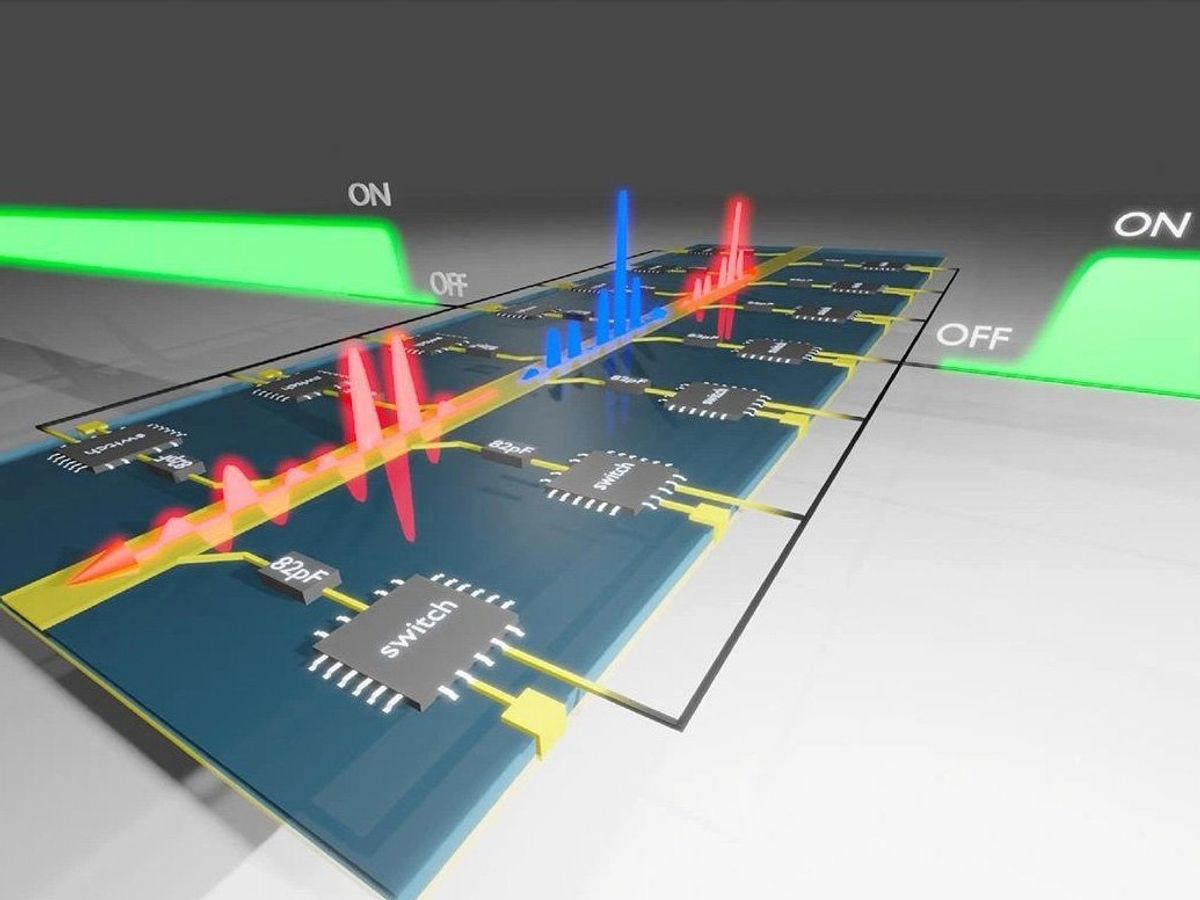Light can reflect off mirrors, and sounds off surfaces. However, scientists have long theorized about time reflections, where a signal passing through a time “interface” would act like it was traveling backward in time. Now a new study for the first time demonstrates time reflections with light waves. This discovery could lead to new, unusual ways to control light, such as photonic time crystals, for potential applications in wireless communications, radar technologies and photonic computing.
A standard reflection occurs when a signal bounces off a boundary in space. In contrast, time reflections can happen when the entire medium in which a light or sound wave is traveling suddenly and drastically changes its optical or sonic properties.
Previously, researchers knew of no way to change a material’s optical properties in a fast, strong, and uniform enough way to create a photonic time interface that could generate time reflections for electromagnetic waves. Now, after six decades of research, scientists have created the first such time interface for light.
When a light wave enters the new time interface and the device changes its optical properties, the signal keeps moving forward in space. However, the signal gets reversed—if it were a spoken word, it would sound as if it were getting played backwards. In contrast, with a conventional reflection, a light or sound wave would travel back at its source but mostly look or sound the same as it did before the reflection.
The scientists accomplished photonic time reflections using a metamaterial—a kind of structure engineered to possess features not generally found in nature, such as the ability to bend light in unexpected ways. Such work has led to invisibility cloaks that can hide objects from light, sound, heat, and other types of waves.
Optical metamaterials, which are designed to manipulate light, possess structures with repeating patterns at scales that are smaller than the wavelengths of light they influence. In the new study, the researchers transmitted radio signals into a meandering strip of metal about 6 meters long. An array of 30 electronic switches, each linked to a capacitor, was connected to this metal strip.
When these switches in the new device are triggered at the same time, the impedance of the strip doubles in about 3 nanoseconds. A time reflection for light can occur if a material’s optical properties change much faster than the variations in time of the signals involved, says study senior author Andrea Alù, an electrical engineer at the City University of New York’s Graduate Center.
In addition, the new time interfaces can stretch or compress the light signals in time. This can in turn abruptly change the color of these signals, Alù notes.
The scientists also showed they could combine multiple time interfaces. In the resulting “temporal slab,” they could make the signals interfere with each other. This novel device is a temporal version of the commonplace Fabry-Pérot filters widely used in telecommunications, lasers, and other applications to control light.
The researchers suggest time interfaces may find use in wireless communications, radar technologies, and optical computing. These applications often reverse the order of signals to help process them. Currently, the most common way of performing such time reversal is through digital means, but this results in time, energy, and memory demands. In contrast, time interfaces can enable time reversal very quickly and with little energy, Alù says.
Moreover, the new time interfaces may help scientists develop exotic new ways to control light, such as “photonic time crystals.” A normal crystal is a structure of many atoms arranged into a regular pattern in space, whereas a conventional photonic crystal possesses features smaller than the wavelengths of light it is designed to deal with. Previously, researchers also developed time crystals, in which many particles are ordered into regular series of motions—patterns in time rather than space. Recently, scientists have developed photonic time crystals, in which optical properties vary regularly over time.
“As a result, one can selectively amplify incoming signals and control, in highly unusual ways, their propagation,” Alù says.
The scientists detailed their findings online 13 March in the journal Nature Physics.
This article appears in the July 2023 print issue as “Time-Reversing Mirror Makes Light Go Backward.”
- What’s a Time Crystal? ›
- The Future of Computing Depends on Making It Reversible - IEEE ... ›
- Time Crystals May Improve Lasers and Enable 6G Wireless - IEEE Spectrum ›
- Photons Crash Into Each Other—on a Time Mirror - IEEE Spectrum ›
- The Tiny Ultrabright Laser that Can Melt Steel - IEEE Spectrum ›
Charles Q. Choi is a science reporter who contributes regularly to IEEE Spectrum. He has written for Scientific American, The New York Times, Wired, and Science, among others.



